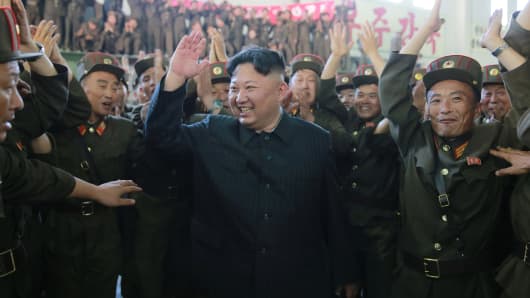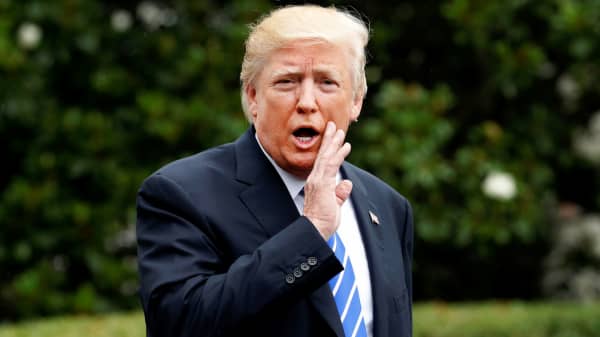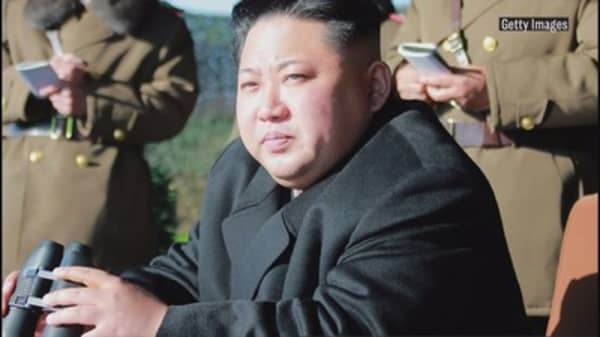For more than 20 years, the one element that's been sorely missing from the diplomatic efforts to curb North Korea's nuclear ambitions has been the lack of any real military threat from the U.S. and its allies. Now that we see that the conciliatory approach cultivated by the Clinton and Obama administrations and the relative indifference of the George W. Bush administration did not work, some American saber rattling is long overdue.
The Chinese purse
That brings us to China and its crucial role in this problem. President Trump has made it clear in recent months to anyone who didn't already know that Chinese economic pressure is the key to forcing North Korea to back off. But as long as the Chinese believe the U.S. will never launch a military strike that truly destabilizes the North Korean nation, Beijing sees sitting on its hands as a pretty good play.
China's main fear is that political chaos after an attack or coup attempt in North Korea will force hundreds of thousands of refugees to stream across the border into the country. Protecting the integrity of the Chinese border has been ingrained in the local culture for centuries as the Great Wall of China would indicate, so this concern is something that transcends the current government in Beijing and even the nation's relatively brief communist history.
So the Chinese need to weigh their pros and cons. It may cost billions to economically punish Pyongyang and supply the cash for a post-Kim Jong Un regime. But will that cost be more than dealing with the financial and social costs of a massive influx of desperate refugees if the U.S. carries out military action? China needs to prove just how much it's willing to pay to avoid not only a refugee crisis but also the introduction of a new massive American military presence in the region. Both are scenarios Beijing loathes and act to avoid even at a high initial financial cost.
A new regime's task
And that leads us to what China would have to pay for exactly.
A number of "third way" thinkers on the North Korean threat have been promoting a more peaceful option of supporting a new regime. In the new book Stop North Korea!: A Radical New Approach to the North Korea Standoff, Shepherd Iverson of Inha University in Seoul calls for the creation of a hefty $175 billion fund to set up a new government in Pyongyang.
Iverson believes that new regime should and could be led by current military leaders in North Korea who would push Kim Jong Un out. Others think that's a long shot and insist that North Koreans currently living in exile are the best candidates to take over.
Their main focus is on Kim Han-sol, a surviving grandson of North Korea's previous leader King Jong Il, who is Kim Jong Un's nephew. For those of you having understandable trouble keeping score at home, Han-sol is the son of Kim Jong Un's half-brother Kim Jong Nam, who was assassinated with a nerve agent at Kuala Lumpur International Airport in February. South Korean officials say North Korea was behind the killing.
The reason Han-sol is considered a viable option by some is because the North Korean people have been brainwashed to believe the family of North Korean founder Kim Il-Sung are their almost divine rulers. Having someone from the family take over from Kim Jong Un is believed to be seen as more legitimate to North Koreans.
No matter who leads this group, the consensus is they're not only going to need money but they'll need to set up some kind of government in exile as soon as possible. A viable alternative like this needs visibility and at least the appearance of getting down to business. That business could include deciding how best to use some of that $175 billion fund if the Chinese are willing to cough it up.
And such a plan certainly has a good chance to get bloody as well. China will not only have to pay to set up such a new government, but help it pay for the financial and military costs included with having to oust Kim Jong Un and possibly imprison or at least effectively exile him to another country.
But these remain the most realistic and relatively peaceful approaches left on the table for these three players. Pyongyang's current regime couldn't be clearer in showing that it is beyond reachable by reasonable negotiations. And nobody really wants a bloody attack that could lead to more death and destruction in the long run.
None of the above tasks can work in a vacuum. The U.S. must first prove to everyone that it's serious about taking military action. It can start to do that at this G-20 summit. China must prove it's serious about paying to avoid that action. And North Korean exiles must prove they're worth that Chinese money.
The Trump administration is already well on its way to completing its part of the deal. It's time for the other players to get moving too.
Commentary by Jake Novak, CNBC.com senior columnist. Follow him on Twitter @jakejakeny.
For more insight from CNBC contributors, follow @CNBCopinion on Twitter.







